All About Cocoa Powder
While cocoa powder is a very common baking ingredient, the science of cocoa powder is often overlooked. For exceptional results, it is important to be aware of the various kinds of cocoa powder and to know how each type is used most successfully in baking.
What is Cocoa Powder?
Have you ever wondered how exactly cocoa powder is made? It is actually the byproduct of making cocoa butter.The process of extracting cocoa butter from roasted cocoa beans leaves behind a cake of cocoa bean solids. These cakes of cocoa bean solids are then processed into a fine powder that is referred to as cocoa powder.
The cocoa bean solids actually contain the majority of the chocolate flavor and therefore cocoa powder has a very concentrated chocolate taste.
Baking Science Fact: While most of the fat from the beans is extracted during the process of making cocoa butter, not all of it is. For this reason, cocoa powder ranges in fat content anywhere from 8%-26%.
Natural Cocoa Powder & Dutch Processed (or Alkalized) Cocoa Powder
Unsweetened cocoa powder, the kind that is used in baking, is produced in two main forms: natural cocoa powder and dutch-processed (also called dutched or alkalized) cocoa powder.
The main difference in these two categories of cocoa powder is the acidity, which I will go more in depth about below. When baking, it is important to understand the difference between natural and dutch-processed cocoa powder. Choosing a cocoa powder in the wrong category for a recipe can drastically effect the success of your baked good.
Natural Cocoa Powder
Natural cocoa powder is made from the cocoa bean solids after cocoa butter has been extracted from roasted beans that have not been treated with an alkaline substance. Cocoa beans are naturally acidic, therefore natural cocoa powder is also acidic, with a ph around 5.
Natural cocoa powder has a bitter taste and a deep chocolate flavor. I find natural cocoa powder to taste brighter and fruitier than dutched cocoa powder. Because it has not been alkalized, natural cocoa powder is typically lighter in color than dutched cocoa powder.
Note: It is important to note that not all natural cocoa powder is specifically labeled as such. In order to identify if your cocoa powder is natural cocoa powder, look at the ingredients on the label. Natural cocoa powder should list “cocoa” or “cocoa powder” as its only ingredient.
Dutch-Processed Cocoa Powder
Dutch-processed (also known as dutched or alkalized) cocoa powder is made from cocoa bean solids after cocoa butter has been extracted from roasted cocoa beans that have been treated with potassium carbonate, which neutralizes the acidity in the beans. In contrast to the acidic ph of 5 of natural cocoa powder, dutch-processed cocoa powder has a ph of 7 or 8.
The process of adding the alkaline substance to the beans produces a darker color and reduces the bitterness. While the darker color of dutch-processed cocoa powder may visually appear more chocolaty, its chocolate flavor is more mild than in natural cocoa powders. Dutch-processed cocoa powders vary in color from light to very dark and the chocolate flavor is actually more mild with the darkest cocoa powders.
While the chocolate flavor is technically less intense in dutched cocoa powder, I find the flavor to be more rounded and complex than natural cocoa powder. To test which you prefer you could mix a little of each with some hot water and sugar (to make it more palatable) to taste the differences!
Note: It is important to note that not all dutch-processed cocoa powder is specifically labeled as such. In order to identify if your cocoa powder is dutch-processed, look at the ingredients on the label. Dutch-processed cocoa powder will list the cocoa powder as “alkalized cocoa powder”, “dutched or dutch-processed cocoa powder” or will state “cocoa powder processed with alkali”.
When to Use Natural vs Dutch-Processed Cocoa Powders
A recipe that has been written properly should specify which cocoa powder to use. It is best practice to always use the type of cocoa powder that the recipe calls for.
If you do happen upon a recipe that does not specify which kind of cocoa powder to use you can use the following guidelines to decide which cocoa powder would work best. The main thing you need to pay attention to is the leavening agent used.
If a recipe calls for baking soda as its leavening agent:
Typically natural cocoa powder will work best in a recipe that calls for baking soda. Baking soda’s makeup is alkaline and in order for it to do its job, make your baked goods rise, it needs an acidic component to react with. Because natural cocoa powder is acidic, it is likely going to be the most successful in a recipe calling for baking soda.
Baking Tip: If a recipe calls for baking soda and also includes another acidic ingredient in a sufficient quantity, you can likely use natural or dutch-processed cocoa powder in that recipe. Common acidic baking ingredients include: buttermilk, lemon juice, brown sugar, molasses, and cream of tartar.
If a recipe calls for baking powder as its leavening agent:
If a recipe uses baking powder as its leavening agent, you can use either natural or dutch-processed cocoa powder in your recipe. Because baking powder does not require an acidic ingredient to do its job, make your baked goods rise, the cocoa powder only serves to flavor and give structure to your baked goods. This is an instance in which you may decide you just prefer one over the other.
If a recipe does not use any chemical leavening agents:
This scenario is the same as a recipe calling for baking powder. If your recipe does not call for either baking soda or baking powder then it is your call on if you use natural cocoa powder or dutch-processed cocoa powder.
Note: You may have noticed from the scenarios above that I did not list an instance where natural cocoa powder could not be used. While dutch-processed cocoa powder can not be used in instances where the recipe needs an acidic component to activate the baking soda, natural cocoa powder will work in any scenario. However, it is important to note that the chocolate flavor will be more acidic when using natural cocoa powder in a recipe that does not use baking soda to neutralize the flavor. It might also be helpful to think about how strong of a cocoa flavor you want in your recipe. Dutch-processed cocoa powders might be preferred in a recipe where the cocoa is a supporting flavor and not the star ingredient.
How to Substitute Natural Cocoa Powder in a Recipe Specifying Dutch-Processed Cocoa Powder
While you can technically use natural cocoa powder in any recipe calling for dutch-processed cocoa powder, adding a pinch of baking soda to the recipe will help neutralize the acidic flavor of the natural cocoa powder. For every 3 TBSP of dutch-processed cocoa powder you are substituting use 3 TBSP natural cocoa powder plus 1 pinch of baking soda.
How to Substitute Dutch-Processed Cocoa Powder in a Recipe Specifying Natural Cocoa Powder
If a recipe specifies using natural cocoa powder it likely needs the acidity in the recipe to be successful. To substitute natural cocoa powder with dutch-processed cocoa powder add a pinch of cream of tartar or 1/8 tsp of lemon juice or vinegar for every 3 TBSP of cocoa powder in the recipe.
Other Cocoa Powder Variations
Double-Dutch or Dark Cocoa Powder
Double-dutch cocoa powder, also sometimes labeled as “dark cocoa powder,” is cocoa powder that has been more heavily alkalized than traditional cocoa-powder. The color is darker and appears more chocolaty, but actually has a more mild chocolate flavor. This cocoa powder is useful when you are looking for a richer chocolate color in your baked goods.
Note: While some cocoa powders may be labeled as “dark cocoa powder,” be aware that this is not the same idea as dark chocolate. Dark chocolate refers to chocolate that is made without milk and contains a high percentage of cocoa, while dark cocoa powder is referring to cocoa that is darker in color due to being more heavily dutched. Dark cocoa powder is actually more mild in chocolate flavor than other cocoa powders that are lighter in color.
Black Cocoa Powder
Black cocoa powder has been even more heavily dutched than double-dutched cocoa powder, and is essentially black in color. This cocoa powder is used when you want your baked goods to have a very dark color. Oreos are the perfect example of when this cocoa powder is used. While it is very dark in color, the chocolate flavor is very mild.
Cocoa Blends
There are various cocoa powders that are a blend of dutch-processed and natural cocoa powders, such as Hershey’s Special Dark Cocoa Powder (a mix of double-dutched cocoa powder & natural cocoa powder) and King Arthur Flour’s Triple Cocoa Blend (blend of black cocoa, dutched cocoa, and natural cocoa). These are quite useful if you only want to keep one kind of cocoa powder on hand. The benefit of the blend is that it works well in recipes that need the cocoa powder to be acidic, but the combination of the cocoas rounds out the flavor profile and darkens the color.
Tips for Baking with Cocoa Powder
Sifting or Whisking
Cocoa powder is ground extremely fine, therefore it has a tendency to clump. It is wise to either sift the cocoa powder or whisk it with your other dry ingredients before adding it to your recipe, especially if the recipe does not call for “blooming” the cocoa powder.
Blooming Your Cocoa Powder
If you have baked with cocoa powder much, you may notice a trend in recipes calling for boiling water or another hot liquid to be poured into the cocoa powder before adding it to a recipe. This is the process of blooming the cocoa powder.
Blooming the cocoa powder helps to intensify the chocolate flavor by releasing flavor that is trapped in the solid particles. When the hot liquid is mixed with the cocoa powder it dissolves quickly and thickens up. This can be done with hot water, hot milk, hot coffee, or hot fat.
If your recipe does not call for blooming your cocoa powder, but you want to do so to intensify the chocolate flavor, you can warm your liquid ingredient and mix it with the cocoa powder and allow it to cool before adding it to the other ingredients. However, this would not work in a recipe that does not have a liquid ingredient or liquid fat, like many cookie recipes for instance.
Pairing Coffee with Cocoa
It is no secret that coffee and chocolate work beautifully together. What you might not know is that even if you don’t like coffee, it can make chocolate taste more chocolaty! I love to keep instant espresso powder in my pantry and whisk a teaspoon or two into my cocoa powder before using it in my recipe. I promise it won’t taste like coffee!
Storing Cocoa Powder
Cocoa powder is best stored in a dry, cool, and dark place. It is best not stored in the refrigerator of freezer because the moisture could cause spoilage. If stored properly, cocoa powder is good for up to 3 years.
My Favorite Recipes That Use Cocoa Powder
Below are a few of my favorite recipes that utilize cocoa powder for you to enjoy!
Easy 6 Ingredient Fudgy Brownies (Natural or Dutch-Processed Cocoa Powder)
Devil’s Food Cake with Chocolate Ganache (Natural or Dutch-Processed; Note: This recipe calls for baking soda but the buttermilk in the recipe is acidic enough that either can be used.)
French Silk Pie (Natural or Dutch-Processed)
Chocolate Espresso Cookies with Butterscotch Chips (Natural Cocoa Powder)


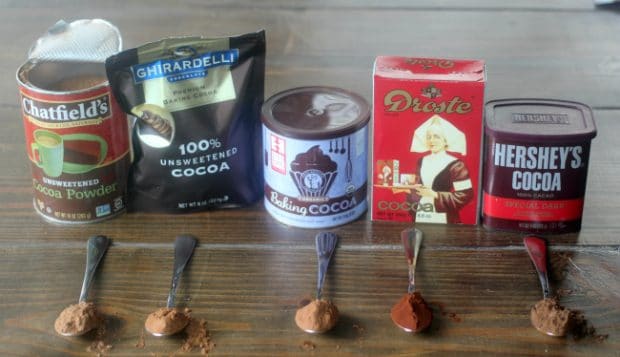
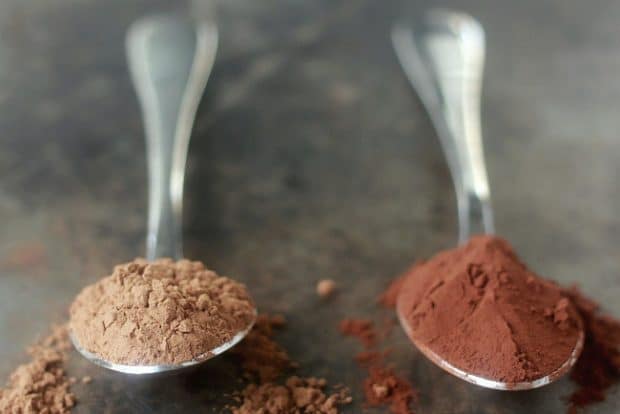
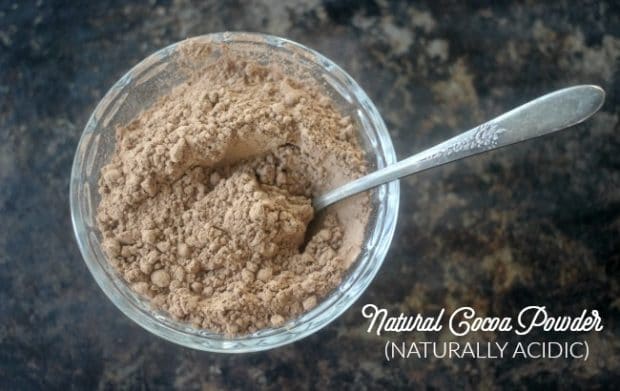
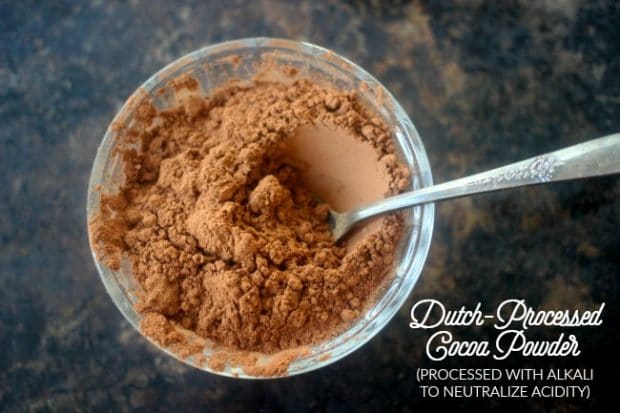
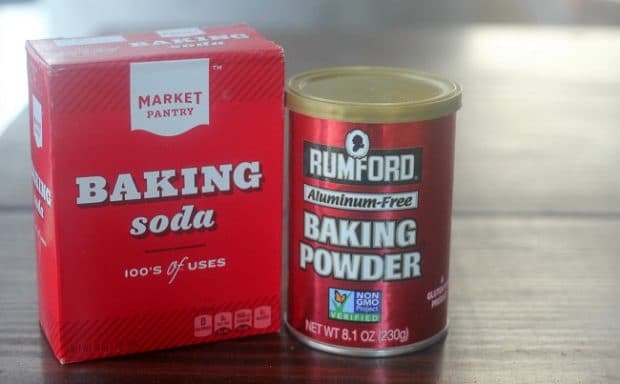
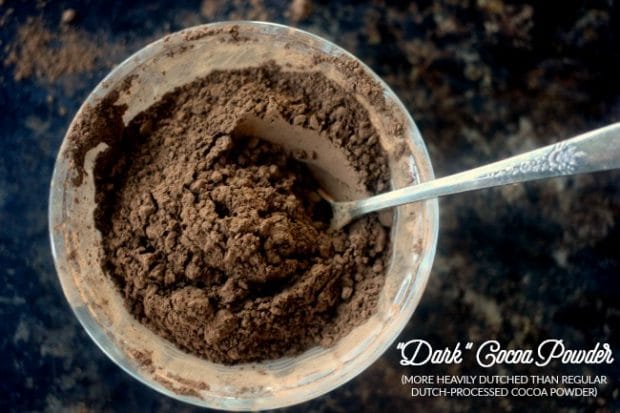
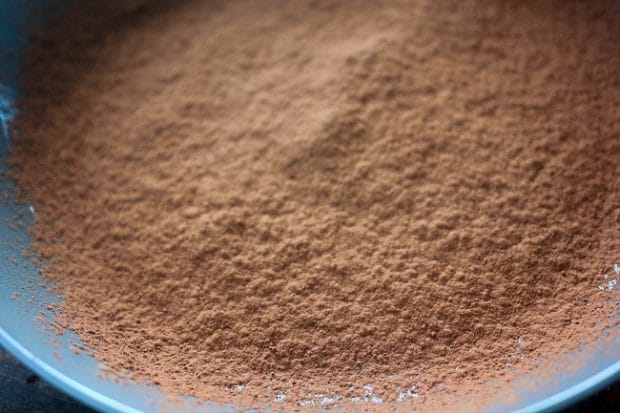
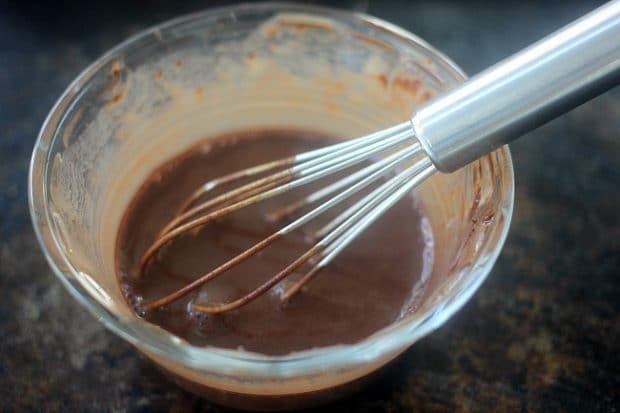
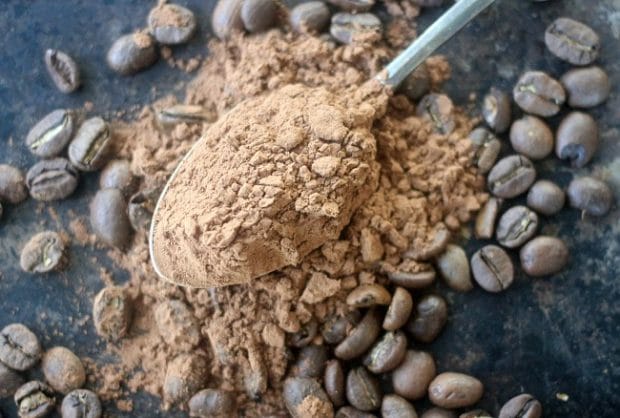
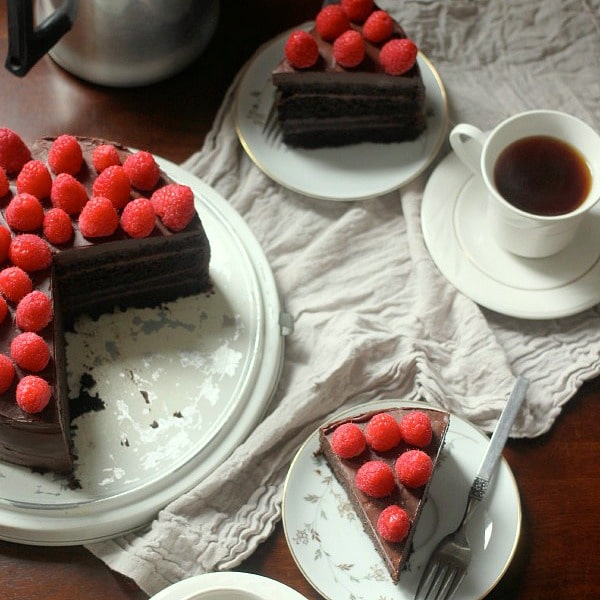
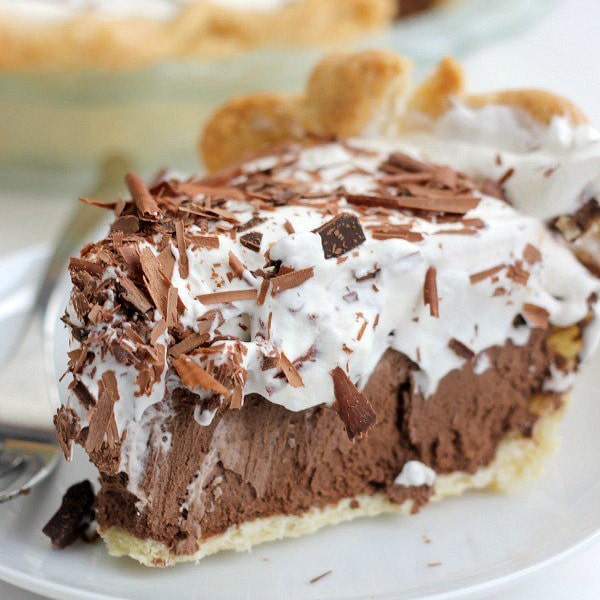

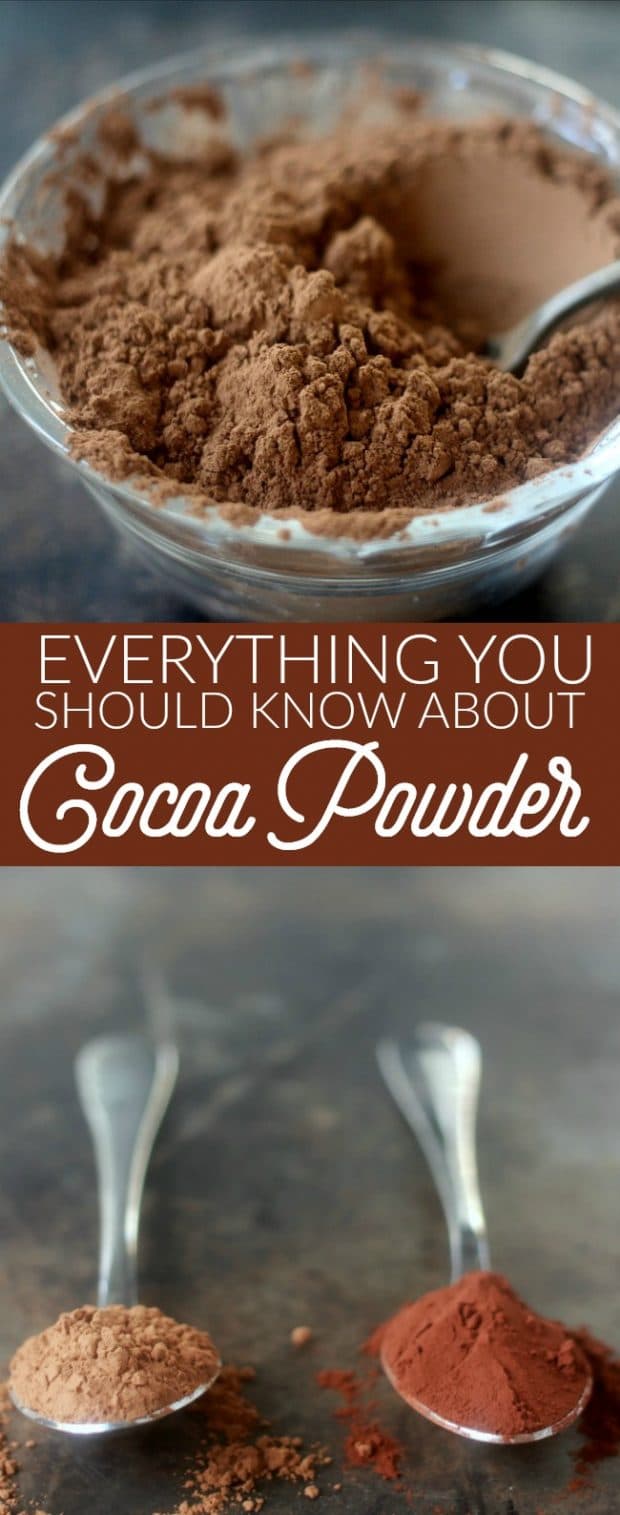
27 Comments on “All About Cocoa Powder”
Yay! Feeling good about my call to just have Hershey’s Special Dark on hand usually lol
Definitely a good idea to keep a blend on hand! Then you never have to worry! 😉
Hi Bettie!
I have a question for you which I hope you can help me in…
I have a personal vanilla cake recipe which I want to change to chocolate, the recipe calls for 308 grams cake flour to 2.5 teaspoon of baking powder.
Do I just remove for example 1/4 cup cake flour and add 1/4 cup cocoa powder? Also how should I adjust the leavening agent? Some recipes use both baking powder and baking soda when they have cocoa powder but I am unsure what to use
Thank you
Hi Bettie!
I have a question for you which I hope you can help me in…
I have a personal vanilla cake recipe which I want to change to chocolate, the recipe calls for 308 grams cake flour to 2.5 teaspoon of baking powder.
Do I just remove for example 1/4 cup cake flour and add 1/4 cup cocoa powder? Also how should I adjust the leavening agent? Some recipes use both baking powder and baking soda when they have cocoa powder but I am unsure what to use
Thank you
What type of cocoa powder is the one I have if it says on the ingredients “Cocoa Powder, Acidity regulator: Potassium Carbonates?
Thanks
That would be dutch processed cocoa powder.
Thank you!
Hi Bettie!
I have a question for you which I hope you can help me in…
I have a personal vanilla cake recipe which I want to change to chocolate, the recipe calls for 308 grams cake flour to 2.5 teaspoon of baking powder.
Do I just remove for example 1/4 cup cake flour and add 1/4 cup cocoa powder? Also how should I adjust the leavening agent? Some recipes use both baking powder and baking soda when they have cocoa powder but I am unsure what to use
Thank you
Hi HB, the base of a chocolate cake recipe is very different than a vanilla cake recipe. Your vanilla cake recipe would be a great base for other flavors such as funfetti, lemon, almond, etc but I wouldn’t try to alter it for chocolate cake. I would recommend using a specific chocolate cake recipe instead.
This information was very very new to me. I never took into consideration that there was a difference in the cocoa powders. The info about the acidity and alkalinity was great to me . Thanks so much. I really really enjoy All you posted information. You have made my desire to learn so so so much more about the art of baking. I am really enjoying this. Thank you so much Baker Bettie.
You’re welcome! I find it all fascinating so I’m happy to share!
Hi Baker Bettie!
I was not looking for information on Cocoa Powder but happened seeing your article and curiously reading it. I love the way you explained things. Thanks for sharing.
Belka.
You are very knowledgeable, such a good teacher and baking instructor. You are very generous, and creative and very much appreciated. Thank you Baker Bette.
Hi
Firstly I would like to thank you for the wealth of information you have offered. I am a Chemical Engineer who recently got into baking and I genuinely appreciate and love the Physics and Chemistry involved in baking.
My question to you is how does natural cacao (not cocoa) powder fit in to this post? I have a lot of cacao powder and I am wondering if I can use that instead of cocoa for a more depth of chocolatey flavour.
Thanks,
Very informative! I’ve been using them interchangeably for years and I like learning more about the science behind it so my skills can improve.
I’ve been trying to use cacao lately and it’s more bitter so definitely requires more tweaks. What do you know about using cacao instead of cocoa?
Excellent article — the most complete I know!
As you know, Hershey’s Special Dark has had a different formulation for several years. It is now composed of all dutched. Your comment on its previous formulation was helpful.
Thanks for letting me know!
Great explanations…so helpful! Thank you!
Hi Betti,
I found your article very informative! Thank you for explaining the difference on a scientific level when to use the different types of cocoa powder.
I am curious as to the difference between cocoa vs cacao powder. Cacao powder is one of the superfoods that is now recommended. Can I use Cacao powder when a recipe calls for cocoa? I am also confused by Hershey’s Cocoa labeling as well because underneath Hershey’s Cocoa it says it is 100% Cacao as well. Help!!
Thank you,
Debbie
All I can say is: THANK YOU FOR REMOVING A LIFE LONG MYSTERY!!!!!
I’m so glad!
Most interesting article on cocoa powder. Made the brownies. 2 thumbs up.
Cheers, Paul
Thanks!
What did I do wrong. They didn’t flatten I sifted both the flour and the Coco but they were still delicious.
Hi, what recipe did you make?
You have so much good information. Love reading and learning.
Thank you! I’m glad you are enjoying it.